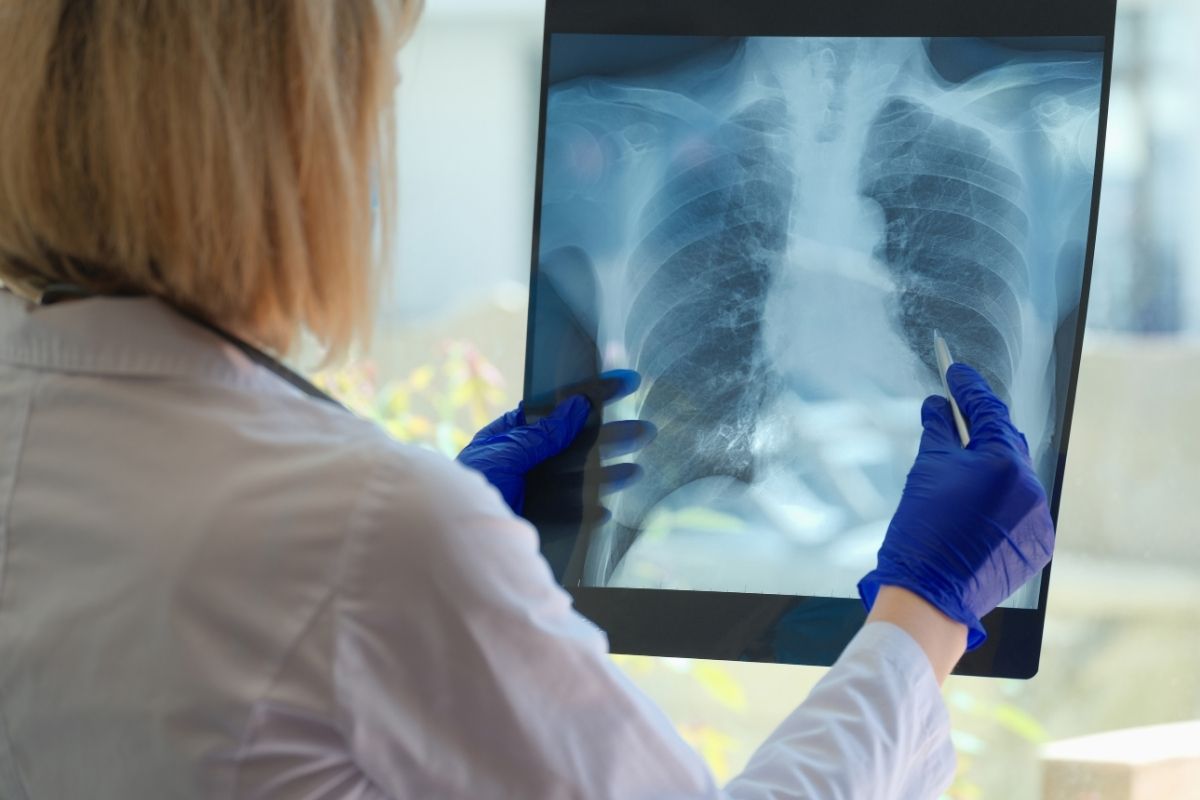Lung cancer is not just a “smoker’s disease.” Many people diagnosed today have never smoked or gave up smoking years ago. It is Australia’s biggest cancer killer and the fourth leading cause of death nationwide each year. Exposure to asbestos fibres, fine dust such as silica, diesel exhaust and industrial fumes can also increase the risk of developing lung cancer.
How asbestos and dust exposure can contribute to lung cancer
When substances like asbestos or respirable crystalline silica are disturbed, they release microscopic fibres or dust particles into the air. Once inside the lungs, these fibres and particles can lodge in the lungs, causing inflammation and scarring over time.
While lung cancer can be caused by other factors, such as smoking, the risk can increase significantly for individuals who have been exposed to asbestos and dust in the workplace. Asbestos and silica dust are both recognised as carcinogens. Exposure to asbestos may also lead to mesothelioma, a rare and aggressive cancer that affects the lining of the lungs.
According to WorkSafe ACT, in Australia, around 29% of lung cancers in men and 5% in women are caused by workplace exposure to dusts, including asbestos and other mineral fibres. Cancer Council Australia also notes that smoking combined with asbestos exposure greatly increases the risk of developing lung cancer.
Who may be at risk of asbestos and dust-related lung cancer
People working in certain industries may be exposed to airborne asbestos or silica dust, often without realising the long-term health risks. These include:
- Tradespeople such as builders, carpenters, electricians, plumbers, bricklayers and roofers – especially working on older homes and buildings
- Stonemasons – especially those who have worked with engineered stone benchtops
- Construction and tunnel workers – cutting, drilling, or grinding rock, concrete, bricks, tiles, or mortar
- Miners and quarry workers – exposed to crushed rock dust
- Manufacturing workers – handling glass, ceramics, or working in foundries
- Demolition workers – removing old building materials
- Shipbuilders and maritime workers
Exposure is not limited to these settings. Home renovations and DIY projects involving older buildings may also pose a risk if asbestos materials and harmful dusts are unknowingly disturbed.
Understanding symptoms
In some cases, signs of lung cancer may not appear until 20 to 40 years after the original exposure to asbestos or silica dust.
If you’ve worked in an industry where dust exposure was possible, it’s important to be aware of the common symptoms, which can include:
- A persistent cough
- Shortness of breath
- Chest pain, especially when coughing or breathing deeply
- Coughing up blood
- Unexplained weight loss or fatigue
If you’re experiencing any of these symptoms, speak to your doctor and mention your work history.
What to do if you’ve been diagnosed
If you’ve been diagnosed with lung cancer and have worked in an industry where you may have been exposed to asbestos or silica dust, it’s important to speak with your doctor about your work history.
Understanding the cause of your illness may help guide treatment and identify if support options are available. In many cases, workers or their families may be able to access support if the exposure happened through a job or workplace.
You can speak with a lawyer experienced in dust-related diseases to find out more. They can explain the process and whether legal advice may be appropriate in your situation.

